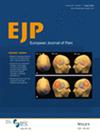The association between serum lipids and migraine is controversial. However, randomized controlled trials have suggested that statins may be efficacious for the prevention of migraine. In this study, we aim to investigate the relationship between lipids metabolism and migraine risk.
Single-nucleotide polymorphisms (SNPs), relating to the serum lipid traits and the effect of lipid-lowering drugs that target APOB, CETP, HMGCR, NPC1L1, and PCSK9, were extracted from genome-wide association studies (GWAS) summary data. The GWAS summary data were obtained from the Global Lipids Genetic Consortium (GLGC), the UK Biobank, and the FinnGen study, respectively. Mendelian randomization (MR) analysis was performed to evaluate the association between serum lipid traits and lipid-lowering drugs with migraine risk.
Regarding serum lipids, it was found that SNPs related to high-density lipoprotein cholesterol (HDL-C), low-density lipoprotein cholesterol (LDL-C), non-high-density lipoprotein cholesterol (non-HDL-C), total cholesterol (TC), or triglycerides (TG) levels were not associated with migraine, migraine with aura (MA) or migraine without aura (MO). In addition, genotypes of HMGCR related to higher LDL-C levels were associated with increased risk of migraine (OR = 1.46, p = 0.035) and MA (OR = 2.03, p = 0.008); However, genotypes of PCSK9 related to higher LDL-C levels were associated with decreased risk of migraine (OR = 0.75, p = 0.001) and MA (OR = 0.69, p = 0.004); And genotypes of APOB related to higher LDL-C levels were associated with decreased risk of MO (OR = 0.62, p = 0.000).
There is a relationship between lipid metabolism characteristics and migraine risk.
Based on the genome-wide association summary data, single-nucleotide polymorphisms (SNPs) related to high-density lipoprotein cholesterol (HDL-C), low-density lipoprotein cholesterol (LDL-C), non-high-density lipoprotein cholesterol (non-HDL-C), total cholesterol (TC), or triglycerides (TG) level were not associated with risk of migraine, migraine with aura (MA) or migraine without aura (MO). However, genotypes of HMGCR related to higher LDL-C levels have shown an increased risk on migraine and MA. And genotypes of APOB or PCSK9 related to higher LDL-C levels have shown a decreased risk on MO, or migraine and MA, respectively. These results suggested that there may be a relationship between lipid metabolism characteristics and the risk for migraine development.


